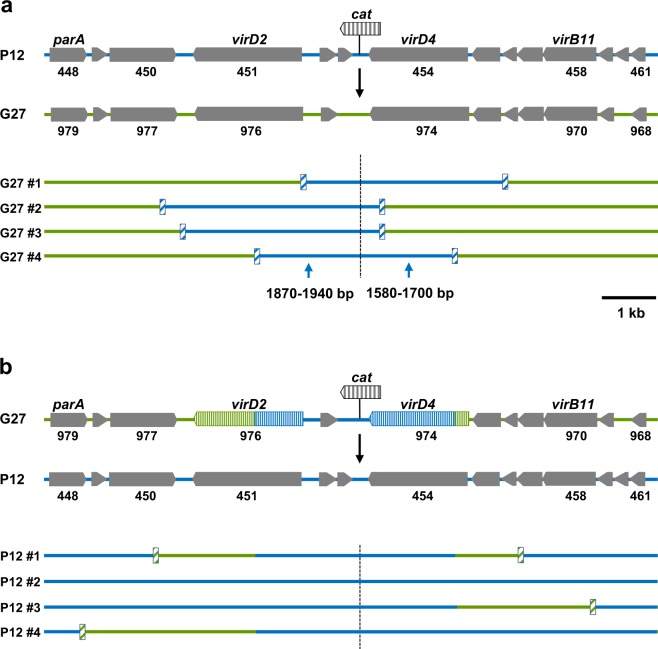Figure 1.
Determination of transferred fragment sizes in a homeologous system. (a) Mating experiments were performed using a P12 donor strain with a cat resistance gene inserted between ICEHptfs4 genes hpp12_453 and hpp12_454, and a kanamycin-resistant G27 recipient strain. Genes flanking the cat cassette in P12, and orthologous genes from G27, are indicated by numbers. Flanking regions were sequenced in the resulting double-resistant transconjugant clones, and alignment with P12 and G27 sequences, respectively, was used to determine regions in the G27 recipient genome (green lines) that had been replaced by P12 donor strain DNA (blue lines). Four representative clones are shown; the position of the cat cassette is indicated by a broken line, and approximate recombination breakpoints by hatched boxes. (b) For a reverse experiment, DNA of transconjugant #4 of panel A was reintroduced into G27 wild-type by selection for chloramphenicol resistance, and a recA deletion was introduced subsequently. The resulting strain was used as a donor strain and mated with a kanamycin-resistant P12 recipient. Recombination breakpoints of representative transconjugant clones are indicated as in (A); for transconjugant clones where recombination had taken place within the P12 sequence region in the donor strain genome, breakpoints could not be determined.

